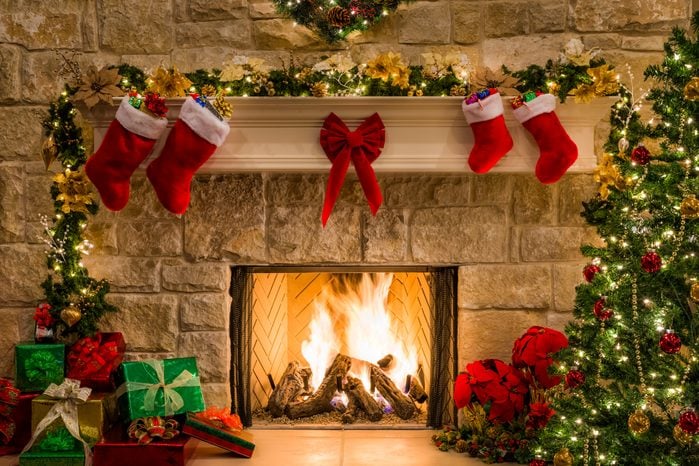
Christmas symbols we all know and love
Nothing says “Christmas” like the sights, smells and sounds of the season: From Christmas cookies to eggnog and mistletoe, the holidays wouldn’t be the same without them. But did you ever wonder why these seemingly random traditions signify Christmas? Many of these Christmas symbols have humble beginnings that go back to the very origins of Christmas and its associations with pagan celebrations around the winter solstice.
Read on to learn more about the history behind the Christmas symbols, from Christmas trees and lights to other Christmas decorations and seasonal activities. Who knows—you might even be inspired to start some new Christmas traditions of your own!
Get Reader’s Digest’s Read Up newsletter for more holiday tips, fun facts, humor, cleaning, travel and tech all week long.
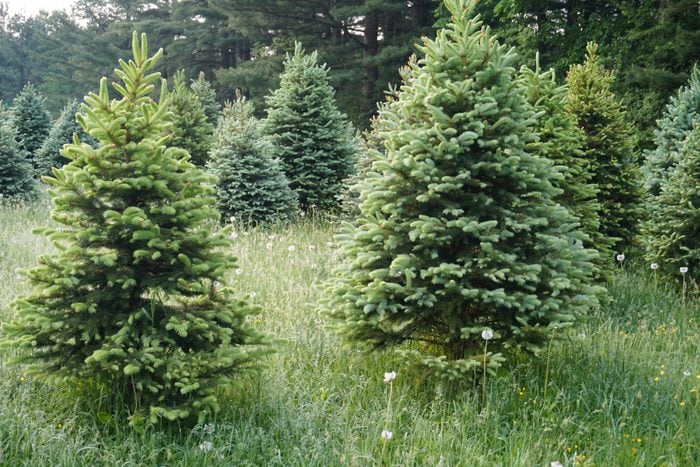
Christmas trees
Ever wonder why we put up Christmas trees? Evergreen fir trees are universal winter decorations: Pagans displayed the branches as a reminder that spring would come again. Romans placed them around temples to honor Saturn, the god of agriculture. But the first time the evergreen was used as a Christmas tree was either in Tallinn, Estonia, or Riga, Latvia. (Each city says it is the true home of the first Christmas tree.) In the 16th century, German Christians brought the trees inside their homes as a symbol of everlasting life. When news spread that Queen Victoria had her German husband, Prince Albert, set up a Christmas tree in their palace, the practice suddenly became the height of Christmas symbolism in England and America.
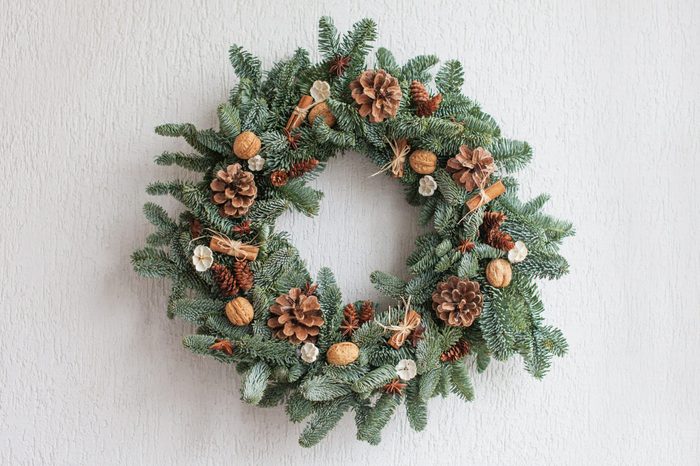
Wreaths
Making wreaths is a handy way to use your Christmas tree trimmings, which is probably how the custom developed in 16th-century Germany. But the symbolism of wreaths goes back to ancient Greece and Rome, when victorious athletes wore leafy branches woven into a crown. The symbol of a never-ending circle made of evergreens also offered the promise of spring’s rebirth to pagans celebrating the winter solstice. Later, this Christmas symbol was adapted into Christian celebrations with the advent wreath, which is used to count down the weeks until the birth of Jesus.
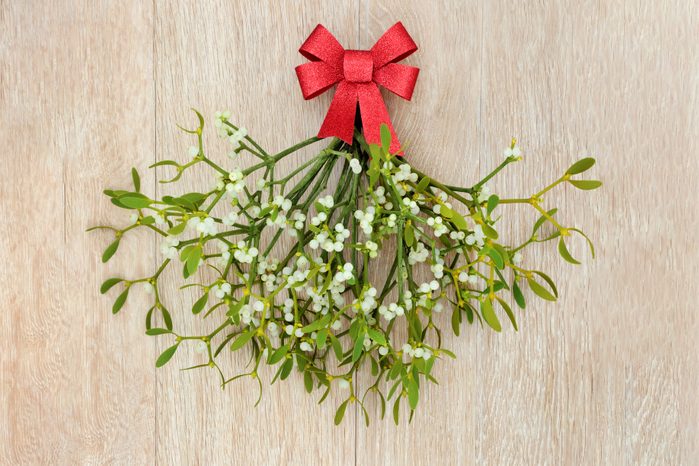
Mistletoe
Norse mythology creeps into Christmas traditions to explain why we kiss under the mistletoe. According to legend, the gods used mistletoe to resurrect Odin’s son, Baldur, from the dead. So Baldur’s mother, Frigg, the goddess of love, made the plant a symbol of love and vowed to kiss anyone who passed under it. The plant also ties into the holiday season because it can blossom even when it’s cold outside. During Christmas celebrations in 18th-century England, men were allowed to kiss any woman standing under mistletoe, and if the ladies refused, that meant bad luck. Safe to say that’s a Christmas tradition that should definitely be extinct!
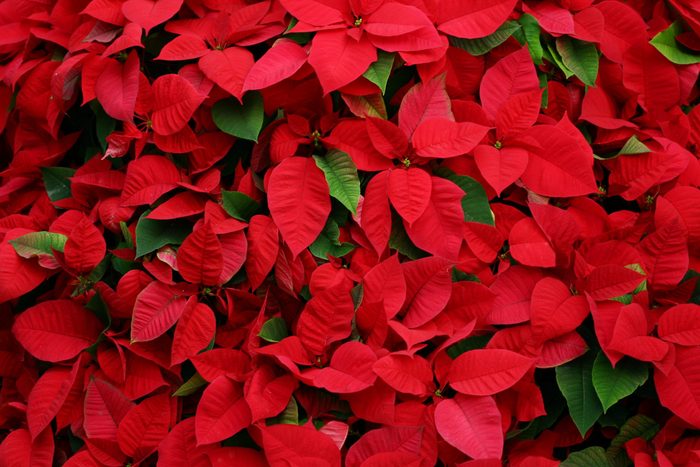
Poinsettias
Why do we decorate with these lovely Christmas symbols—besides the fact that their bright red color is also linked to the season? The story of the poinsettia begins in the plant’s native Mexico, where a legend says humble weeds left by a poor girl as an offering to baby Jesus at a nativity scene miraculously turned into the gorgeous flower. A 19th-century U.S. ambassador to Mexico, Joel Roberts Poinsett, brought the plants that were later named after him to the States, which is how poinsettias became the official Christmas flower.
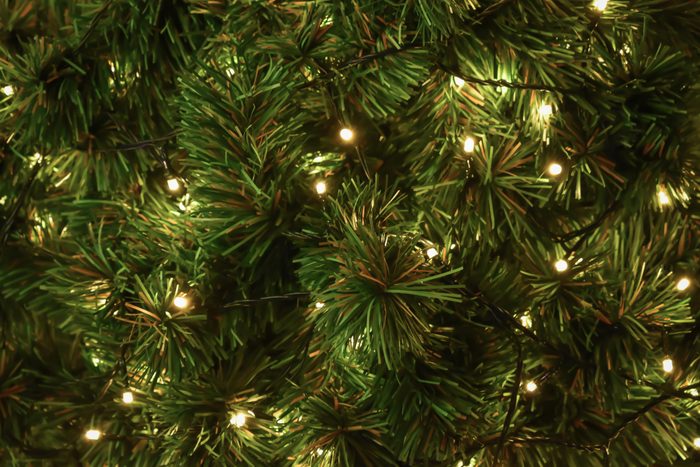
Christmas tree lights
Today, we’ve gone crazy for Christmas lights, as seen in many American towns’ amazing Christmas light displays. This tradition goes back to the 16th century, where theologian Martin Luther is said to be the first person to put lights on a Christmas tree. Legend has it that he was walking through a forest one night and was moved by the beautiful stars shining through the trees. When he got home, he recreated what he saw for his family by putting a tree in their living room and placing lighted candles on its branches.
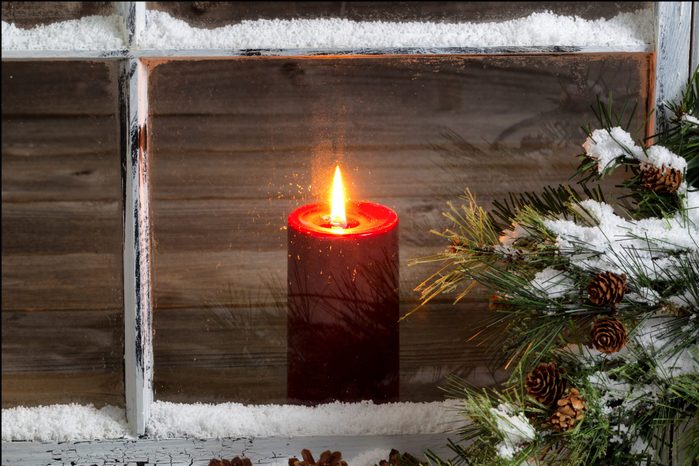
Candles
The symbolism of light during the holiday season goes beyond just the lights on your tree. During the darkest of days of the year, candles and fire represented hope, warmth and rebirth in winter solstice traditions around the world. These eventually merged with Christian traditions for Christmas. In Scandinavia, young girls wear wreaths on their heads lit with candles for St. Lucia Day on Dec. 13. In New Mexico, luminarias, or candles in paper bags, light pathways at Christmas. A similar Mexican tradition, Las Posadas, has young people carrying candles to symbolically light the way for Mary and Joseph’s journey before Jesus’s birth. Advent wreaths also use candles to count down the four weeks before Christmas.
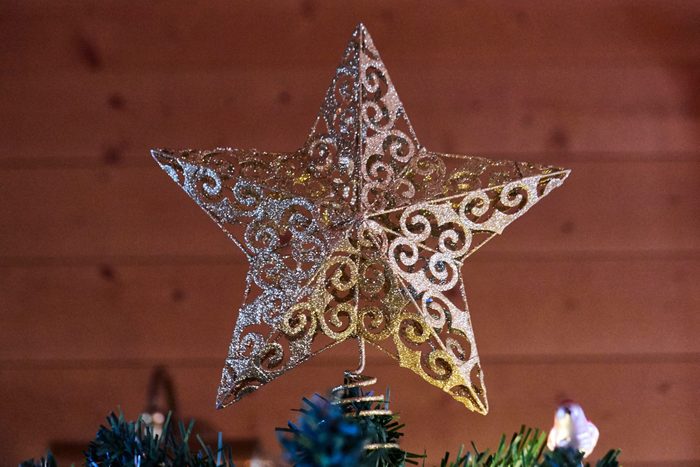
Stars
Another symbol of light during the holidays is the Christmas star, which, according to Christianity, guided the three wise men to baby Jesus. You’ll probably place a star on top of your Christmas tree, cut out cookies in the shape of a star or even have your kids make star-shaped Christmas crafts out of lollipop sticks or paper towel rolls. As with other symbols of light around the solstice, the star represents hope for all mankind during dark times. But the Star of Bethlehem may have been a real scientific thing: Every few hundred years, Jupiter and Saturn appear as one to the naked eye, a “great conjunction” that last occurred in December 2020. Some scientists theorize a planetary conjunction could have been what the three wise men saw as well.
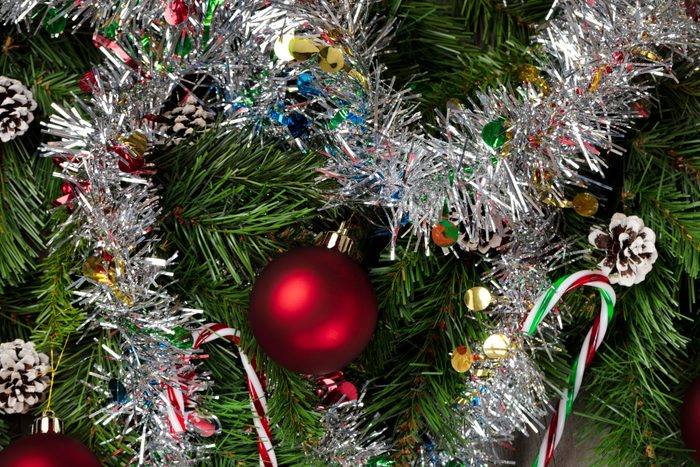
Tinsel
Although tinsel has gone a bit out of style in Christmas decorations—previous versions contained poisonous lead, and even the modern PVC type is seriously hazardous for your pets—it used to be all the rage. Legend has it that a European folktale credits the webs of “Christmas spiders” for the tradition of shimmery threads on a Christmas tree. Tinsel started out made of real silver as a symbol of wealth and a lovely way to reflect candles on old-timey German Christmas trees. But silver is expensive and tarnishes; as the tradition came to America, different metals were used, but all had downsides and eventually fell out of favor. Today, if you’re going to use tinsel, make sure it’s made from an earth-friendly, biodegradable, sustainable material such as raffia.
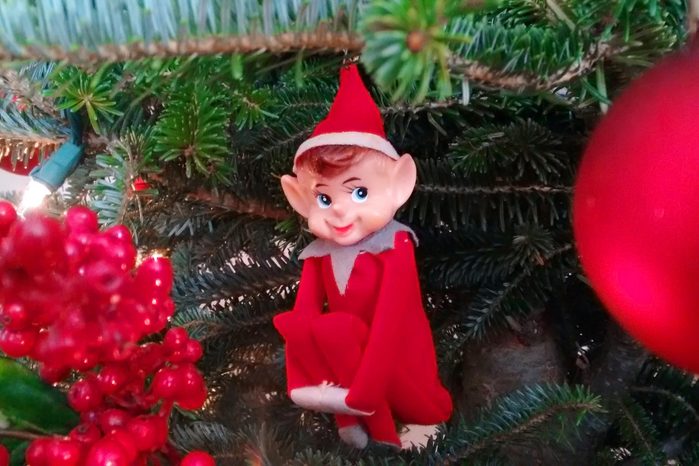
Elf on the Shelf
Another modern Christmas symbol, and the holiday scourge of parents everywhere, is a brand-new tradition and a study in marketing success. Christmas elves, of course, are not new: Mischievous elves crop up in Scandinavian, Celtic and German folklore, and they became linked with the Santa Claus tale in the 19th century. Fast forward to 2005, when twin sisters and their mother self-published The Elf of the Shelf, about a family tradition they had growing up. Their toy elf only moved at night, traveling back and forth to the North Pole to report the kids’ naughty-or-nice behavior to Santa and returning to a new location around the house. Today, the ubiquitous elf is a festive Christmas cartoon to watch this holiday season, along with being a must-have for kids.
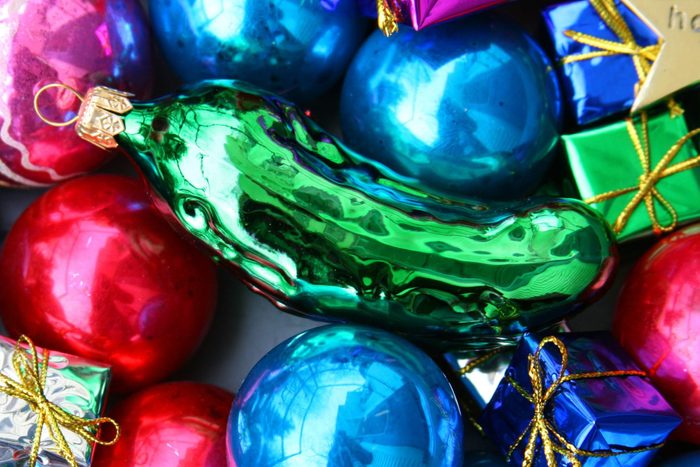
Christmas pickle
Have you ever noticed a Christmas pickle ornament hanging on someone’s tree? In this modern holiday tradition, if you find it first, it’s said to bring you good luck. But there’s actually a history behind this odd Christmas symbol—or rather, several histories. Some stories claim it’s a German tradition; others suggest it comes from a Civil War soldier who miraculously recovered after eating a pickle at Christmastime. Or it could be a totally made-up marketing ploy to sell ornaments.
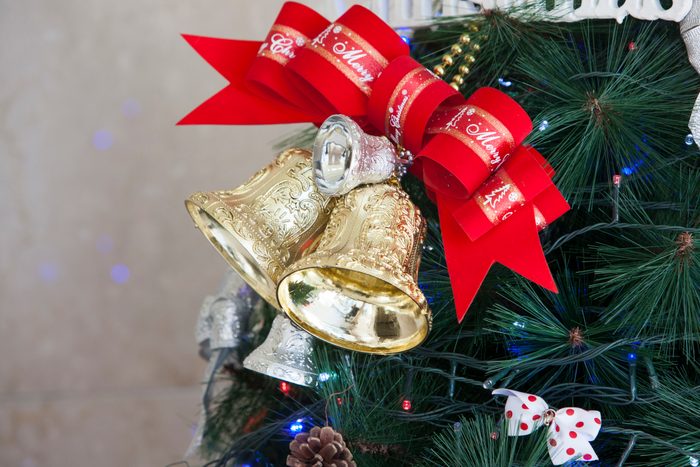
Bells
Sleigh bells, church bells, jingle bells—there’s no shortage of these jangling objects during the holiday season. But why are bells Christmas symbols? These Christmas ornaments have a history that is both symbolic and practical. Bells in both pagan and Christian traditions supposedly ward off evil spirits. In addition, church bells are rung to signify an important event, such as Christ’s birthday, or even to let churchgoers know it’s time for services. As for jingle bells? They’re to warn you a sleigh is coming so you can get out of the way—after all, you can’t hear horses’ hooves in the snow.
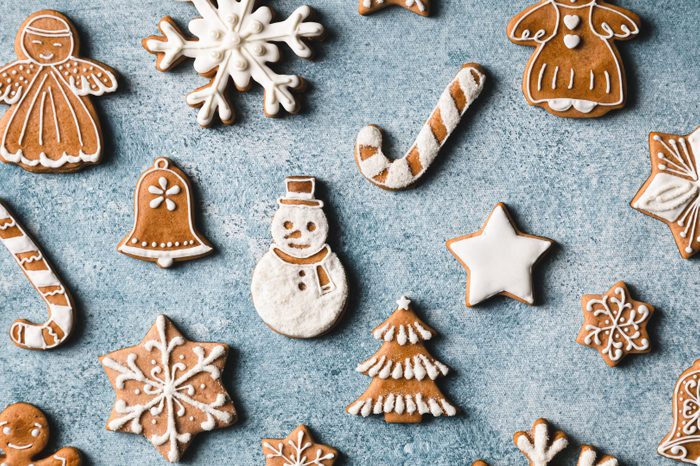
Christmas cookies
If we can learn one thing from history, it’s that people have always celebrated winter holidays with good food. Ancient peoples gathered around the winter solstice to feast before cold weather wiped away their crops. Plus, the wine and beer that had been fermenting since the spring were finally ready to drink. As Christmas replaced these solstice celebrations by the Middle Ages, the feasting continued—with the all-important addition of desserts (Christmas cookies included!). Bakers brought out expensive ingredients like butter, lard and sugar for such festive occasions, and started experimenting with warming spices like nutmeg and cinnamon.
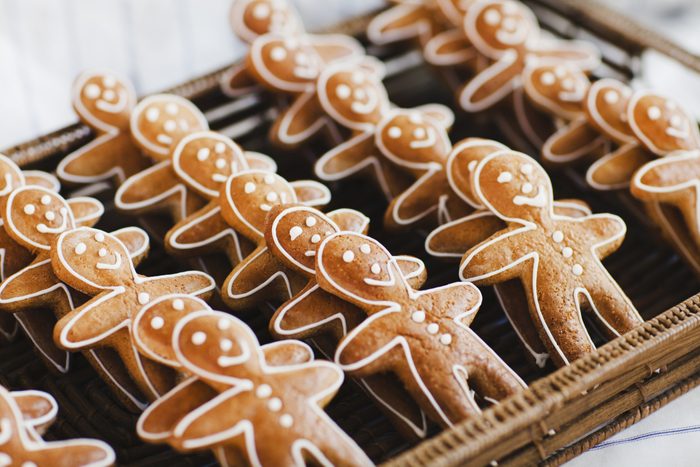
Gingerbread men
This specific Christmas cookie tradition features the warm, rich flavor of ginger. This spice likely made its way to Europe from Asia on trade routes during the Middle Ages, and it was then developed into different versions of a spicy baked good called gingerbread. According to legend, Queen Elizabeth I of England was the first to make gingerbread into men, representing the foreign dignitaries she would serve the dessert to at a fancy dinner. But why do we think of gingerbread men as one of the many Christmas symbols? They may have become popular around the holidays as a spicy treat to “warm up” those who ate one during the cold winter season.
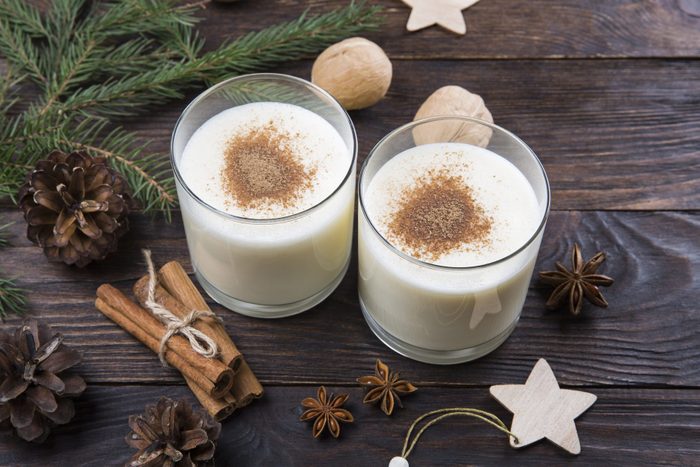
Eggnog
Eggnog doesn’t seem like a particularly elite drink, but that’s how it got its start. British aristocrats came up with the creamy concoction as a warm winter drink and added brandy and sherry to keep it from spoiling. Because the ingredients were so expensive, only the wealthy could afford to drink it. When it made its way to the American Colonies in the 1700s, colonists subbed the pricey liquors for rum. At the time, rum was also called grog, so bartenders named the drink egg-n-grog. Later, it became eggnog, after the wooden “noggin” mugs the drink was served in.
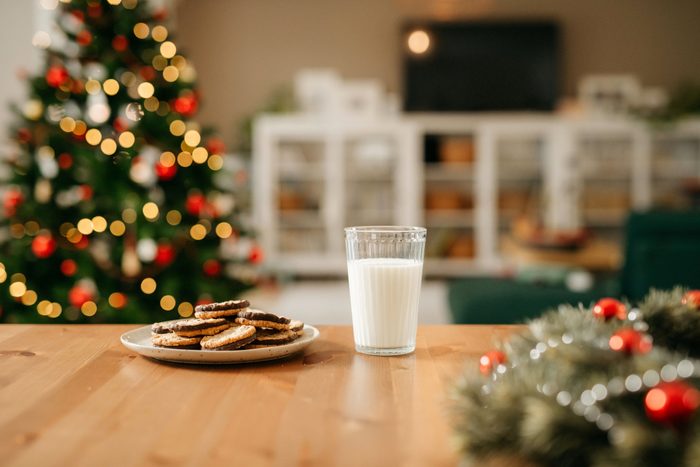
Milk and cookies for Santa
This tradition hasn’t changed all that much since it began in medieval Germany. During Yule season, children left out food at night in hopes of getting presents from a different white-bearded guy: Odin, the all-powerful Norse god who traveled on his eight-legged horse, Sleipnir. The American custom we know today started during the Great Depression. Parents used the Christmas symbols of milk and cookies as a way to teach their kids that even when money was tight, they still had to be considerate of others and show gratitude for the blessings in their lives.
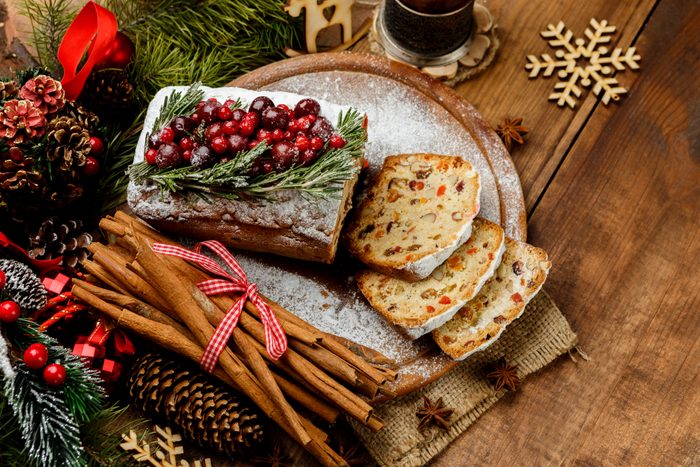
Fruitcake
Today, you’d probably list these heavy cakes as one of those holiday foods that aren’t worth the calories. But back in Victorian times, fruitcakes were the height of indulgence during the Christmas season. Recipes used dried or preserved fruits and nuts from the fall season saved up for special occasions, like—you guessed it—Christmas. But the cake’s roots go back much further, to Roman times, when a similar concoction called satura lasted forever without going bad. Sounds appetizing!
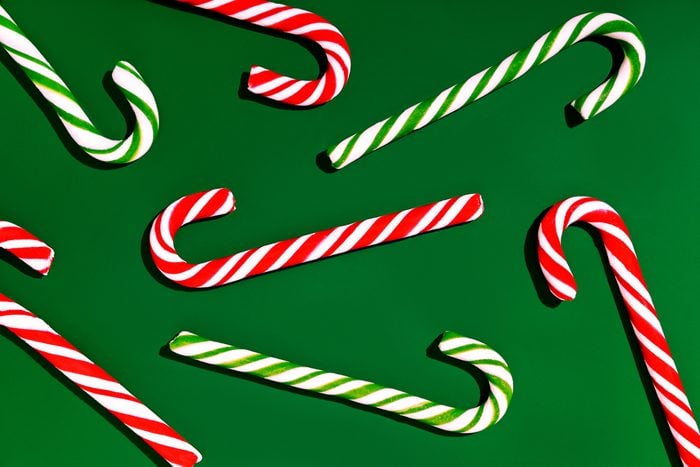
Candy canes
Forget the fruitcake: Candy canes are a much more popular, and yummier, holiday treat. But why are these confectionery canes Christmas symbols? Here’s a bit of Christmas trivia you probably didn’t know: Legend has it they were first invented by a choir master to keep choir boys occupied during long Christmas services, and were made into the shape of a shepherd’s crook to symbolize Jesus as the shepherd of his followers. In some tales, the white of the candy cane represents purity, and the red the blood of Christ. In 1920s America, the treat began being mass produced, and a Christmas symbol was born.
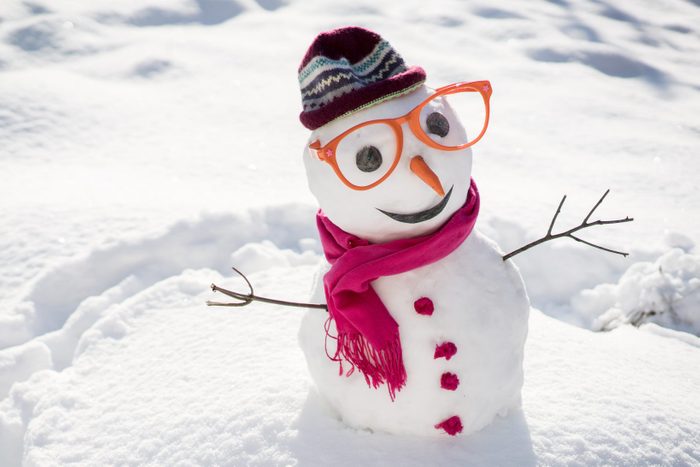
Snowmen
The first documented snowman appeared in 1380, but mankind has probably been making snowmen for as long as there’s been snow. These Christmas symbols were especially popular during the Middle Ages, when many lacked the proper resources or outlets for artistic expression. So instead of trying to find traditional art supplies, they turned to snowmen as cheap Christmas decorations—and there was plenty of it! Michelangelo was even commissioned to build a snowman for the ruler of Florence!
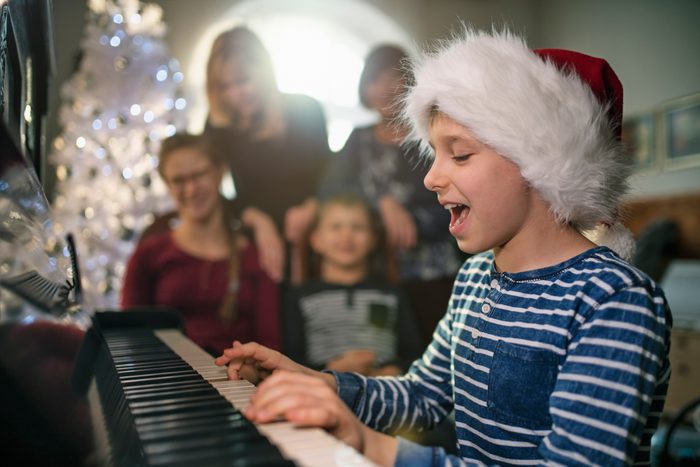
Christmas carols
When Christians began replacing pagan winter festivals with Christmas, bishops across Europe requested certain hymns to be sung at Christmas services. Many composers wanted to write their own Christmas carols, but since they were always in Latin, they weren’t terribly popular. Then in 1233, St. Francis of Assisi started putting on nativity plays, which included canticles that told the story of Christ’s birth. These were usually all in a language that audience members could understand, so they sang along. Since then, Christmas carols have always put listeners into the cheery holiday spirit.
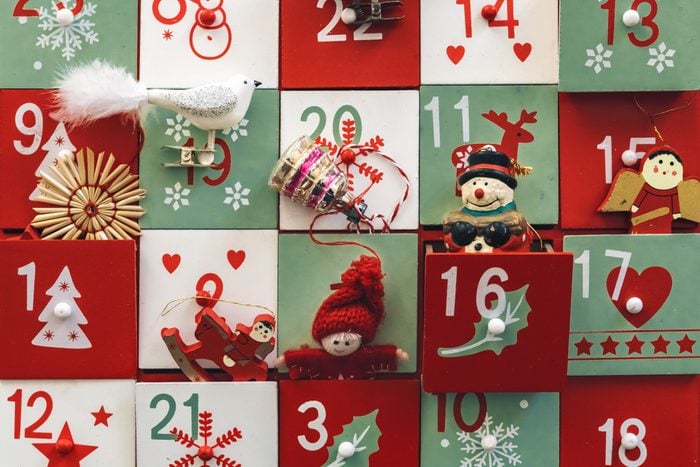
The 12 days of Christmas
One of the most popular, if long and repetitive, Christmas carols is the countdown classic “The 12 Days of Christmas.” But the 12 days of Christmas are actually a thing: In the Christian tradition, they are the 12 days between the birth of Jesus on Dec. 25 and Epiphany (sometimes called “Three Kings Day”) on Jan. 6, when the three wise men, or magi, visited the baby and presented him with gifts—which is also why we give gifts at Christmastime. Shakespeare’s play Twelfth Night was also likely written as entertainment during this period of celebration.
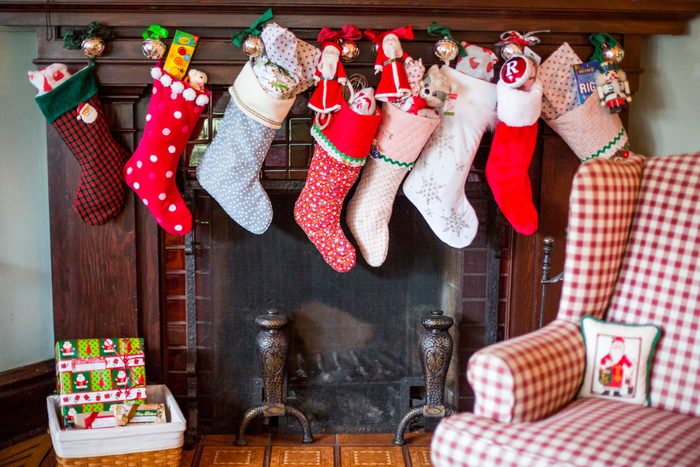
Stockings
You can thank Ol’ Saint Nick for those treats in your Christmas stocking. According to legend, the real-life St. Nicholas heard about a widower who was worried his three daughters would never marry because they were so poor. He found out where the family lived and snuck down their chimney that night. He saw the girls’ socks drying over the fireplace, filled them with gold coins and disappeared. When the girls got up the next morning, they realized they finally had dowries to get married.
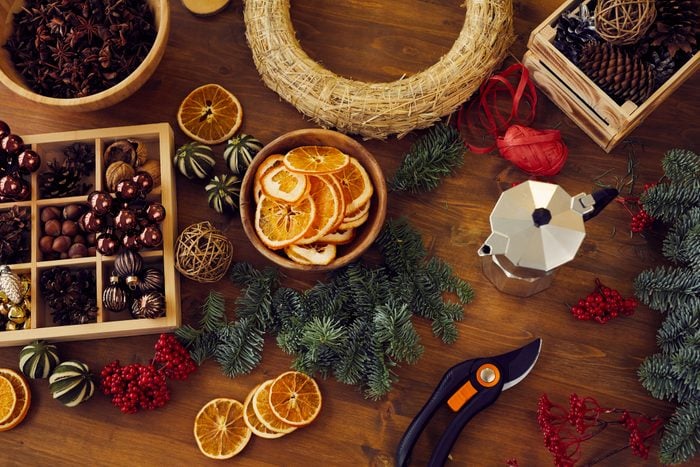
Christmas oranges
If you’ve run out of time to get stocking stuffers on Christmas Eve, consider looking in your fridge’s fruit drawer for some oranges. These lesser-known Christmas symbols were actually traditional 19th-century stocking presents, and in the original St. Nicholas stocking folktale, sometimes it’s said that he left oranges instead of gold coins. Why? Putting oranges in Christmas stockings was a much more affordable tradition to replicate than a bag of gold, yet the exotic fruit still seemed a rare, indulgent treat for the winter season.
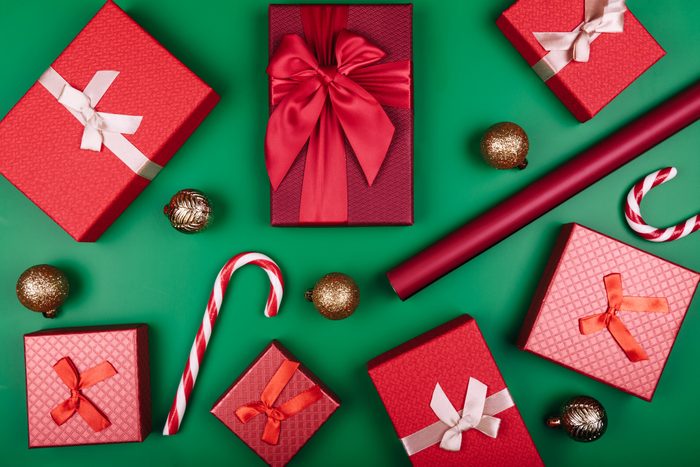
Christmas colors
The red poinsettia is the perfect plant for the holiday season—but why are red and green the Christmas colors, anyway? Green is easy to explain: Evergreen plants and trees have long represented the promise of the coming spring. The evergreen holly includes red berries with its green leaves, which could be a link between the red and green Christmas colors. But the real reason red is forever associated with Christmas is due to Santa Claus—or, rather, to artist Haddon Sundblom, who created our modern interpretation of Santa adorned in a red coat in 20th-century Coca-Cola ads.

Saying “Merry Christmas”
It sounds like something you’d say in merry old England—but interestingly, the British actually say “Happy Christmas,” leaving “merry” to the Americans. That’s not how it started, though: English author Charles Dickens popularized the traditional phrase “Merry Christmas” in his 19th-century story A Christmas Carol. As the saying caught on in America, where it has remained the go-to greeting for the holiday, the Brits balked at its popularity and went back to what they considered a more sophisticated seasonal expression.
Additional reporting by Claire Nowak.
